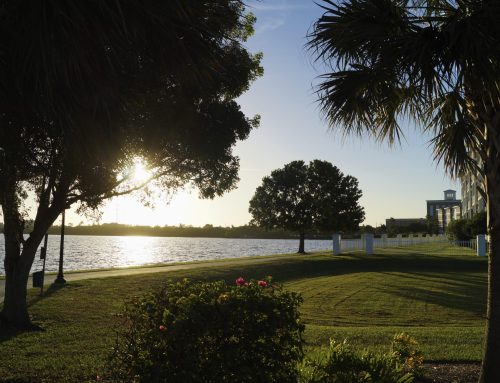Fertilizing your lawn is an important step in the maintenance and care of your home’s grass. However, you may not be aware that you can be over-fertilizing your lawn which can harm or even kill your turf. If you’re new to home ownership or are looking to improve your green thumb, keep reading. In this article, we’ll cover what are the signs of over-fertilizing, the proper application of fertilizers, and how to reverse over-fertilization of your lawn.
What Are the Signs of Over-Fertilizing Your Lawn
There are multiple over-fertilization lawn symptoms that you should be aware of once you have your own landscaping to look after. One of the most recognizable signs is that you will see a crusting of fertilizer on the top of your soil. This is a clear signal that you’ve put too much fertilizer on your lawn. A few other over-fertilization lawn symptoms include:
- Leaf scorch or fertilizer burn
- Limp or black roots
- Yellow or brown tips on the blades of grass
- Limited or no growth after fertilizing
All these symptoms stem from the fact that there is too much salt in your topsoil, which makes it difficult for your lawn to absorb water. If your lawn is yellowed, it can still possibly be saved. If your lawn has turned totally brown, it may be dead and new seed or sod will need to be put down.
Before you begin a lawn or grass project, you should follow one simple rule: don’t fertilizer without a soil test! Ideally, this should be done by a soil test laboratory that can analyze your soil and give you recommendations for any shortfalls in nutrients they find in your soil. A soil test will also give you information about the pH level of your soil. A low pH level affects the availability of nutrients in your soil, and whether you need to add lime to your soil to correct this imbalance.
Steps to Repair an Over-Fertilized Lawn
Depending on the severity and when you realized your lawn was over-fertilized, there are a few different steps to repair an over-fertilized lawn.
Step 1 – Remove Extra Fertilizer
If you accidentally spilled too much fertilizer in one area, be sure to remove it as soon as possible. Rake it up and remove it if possible. If not, use a rake to spread it out as evenly as possible throughout your entire lawn, and then water it immediately to dilute the fertilizer.
Step 2 – Water Your Lawn
By watering your lawn after you have over-fertilized it, you are washing away the excess and helping to dilute the fertilizer as much as possible. This works best immediately after you realize you have over-fertilized your grass but can also help if you notice your turf is coming in yellow or turning brown. Water your grass with a sprinkler and saturate it with at least one inch of water every day for a week, or until your grass starts to improve.
Step 3 – Delay Mowing
If you over fertilized your lawn, delay any mowing you had planned. Grass with longer blades has more photosynthesis taking place which means the grass is growing more and absorbing more nutrients and getting rid of the excess that is in your soil.
Step 4 – Reseed
If your lawn cannot be saved, you’ll need to reseed any bare spots. First, water the bare area thoroughly to get rid of any excess fertilizer. Top it up with fresh topsoil and use a cultivator to work it into the soil and then rake it. Sprinkle the bare spot with grass seed and cover it lightly with straw to retain moisture. Be sure to then water it daily until the grass is established.
If you need help either identifying over-fertilization lawn symptoms or any other help with landscaping in general, it’s best to speak to professionals. At Cutters Edge we are committed to meeting our customer’s expectations, by providing highly skilled employees, state-of-the-art equipment, unmatched service, and professionalism. Get in touch today to discuss your landscaping needs!





